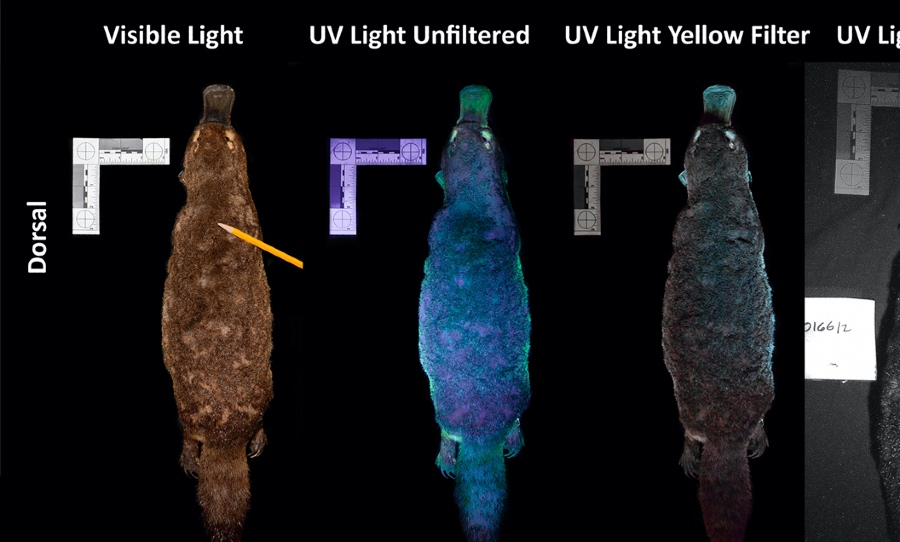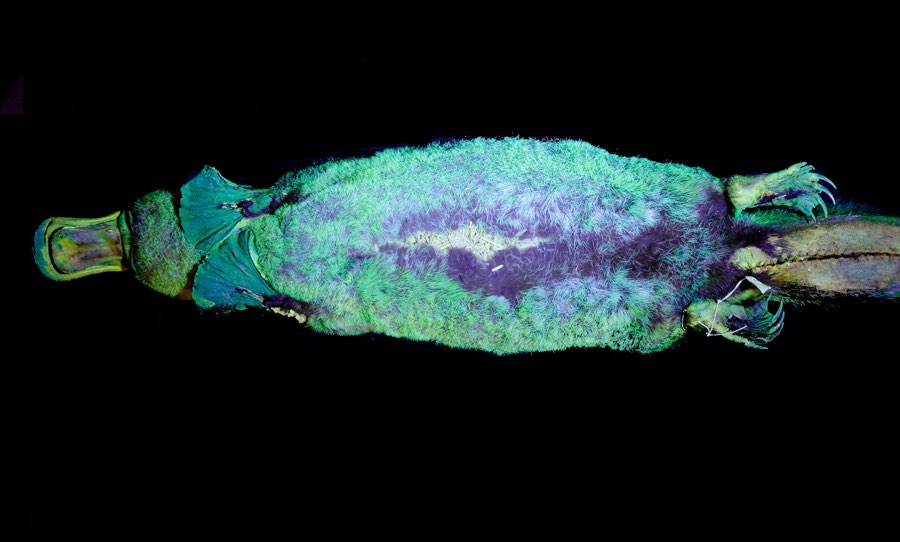Despite already being one of the most confusing animals on the planet, scientists have discovered that platypus are one of the few mammals who glow green in UV light.
No, we’re not kidding. Scientists have discovered that platypus are ‘biofluorescent’, meaning they glow when exposed the ultraviolet (UV) light.
Aside from having an electroreceptive bill, mammalian egg-laying abilities, and a venomous spur in their ankle, scientists have discovered that the platypus is also one of the only mammals to have biolfluorescent abilities, according to a paper published in Mammalia last month.

“Biofluorescence, in which short wavelengths of light are absorbed, and longer wavelengths are re-emitted by living organisms, has been observed in a wide range of fishes, reptiles and amphibians,” the paper reads.
Biofluorescence causes colour changes in animals exposed to UV light, as shorter wavelengths are absorbed and then re-emitted through longer wavelengths – as opposed to bioluminescence, which is the light generated from independent chemical reactions within an organism.
Who had “Platypus evolving into glow in the dark Psyduck” on their 2020 bingo card? https://t.co/hsmH97LMAX
— Greg Linares (@Laughing_Mantis) November 1, 2020
“Here we document the discovery of fluorescence of the pelage of the platypus (Ornithorhynchus anatinus)—to our knowledge, the first report of biofluorescence in a monotreme mammal under UV light.”
Monotreme mammals are the extremely rare family that the platypus belongs to, as well as echidnas and spiny anteaters, which all lay eggs.
While the fluorescent glow has also been observed in two other mammals, the “New World flying squirrels,” and the “marsupial New World opossums,” this recent discovery has opened up new possibilities for evolutionary theories, considering that platypuses are separated from these other mammals by roughly 150 million years of evolution.
Scientists: doubting the platypus since 1770.
— Catholic Kangaroo (@CatholicKanger1) November 2, 2020
The project’s lead scientist and Associate Professor of Natural Resources at Northland College, Paula Spaeth Anich, described the purpose behind the experiment.
“It was a mix of serendipity and curiosity that led us to shine a UV light on the platypuses at the Field Museum,” said Anich in a statement.
“But we were also interested in seeing how deep in the mammalian tree the trait of biofluorescent fur went.
“It’s thought that monotremes branched off the marsupial-placental lineage more than 150 million years ago. So, it was intriguing to see that animals that were such distant relatives also had biofluorescent fur.”



